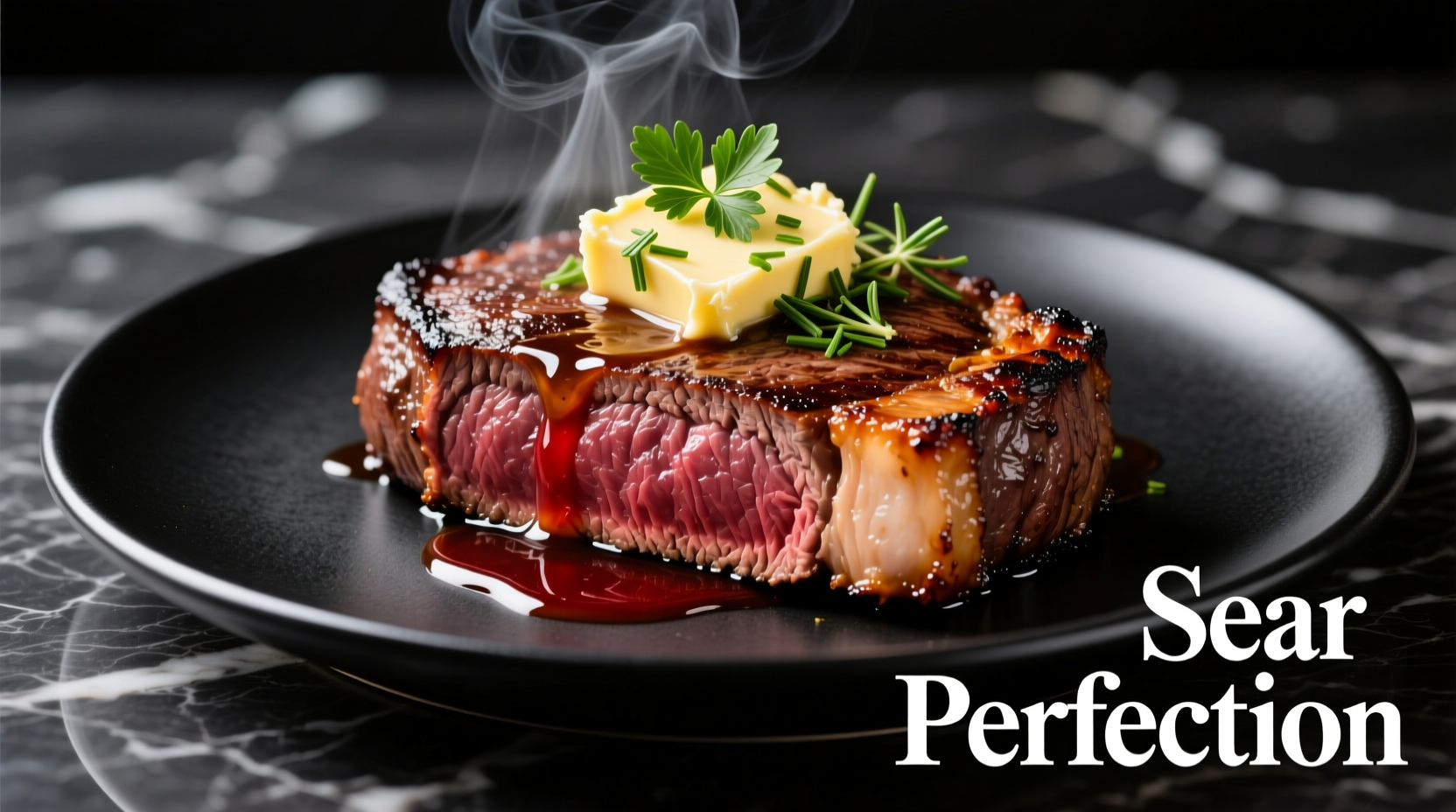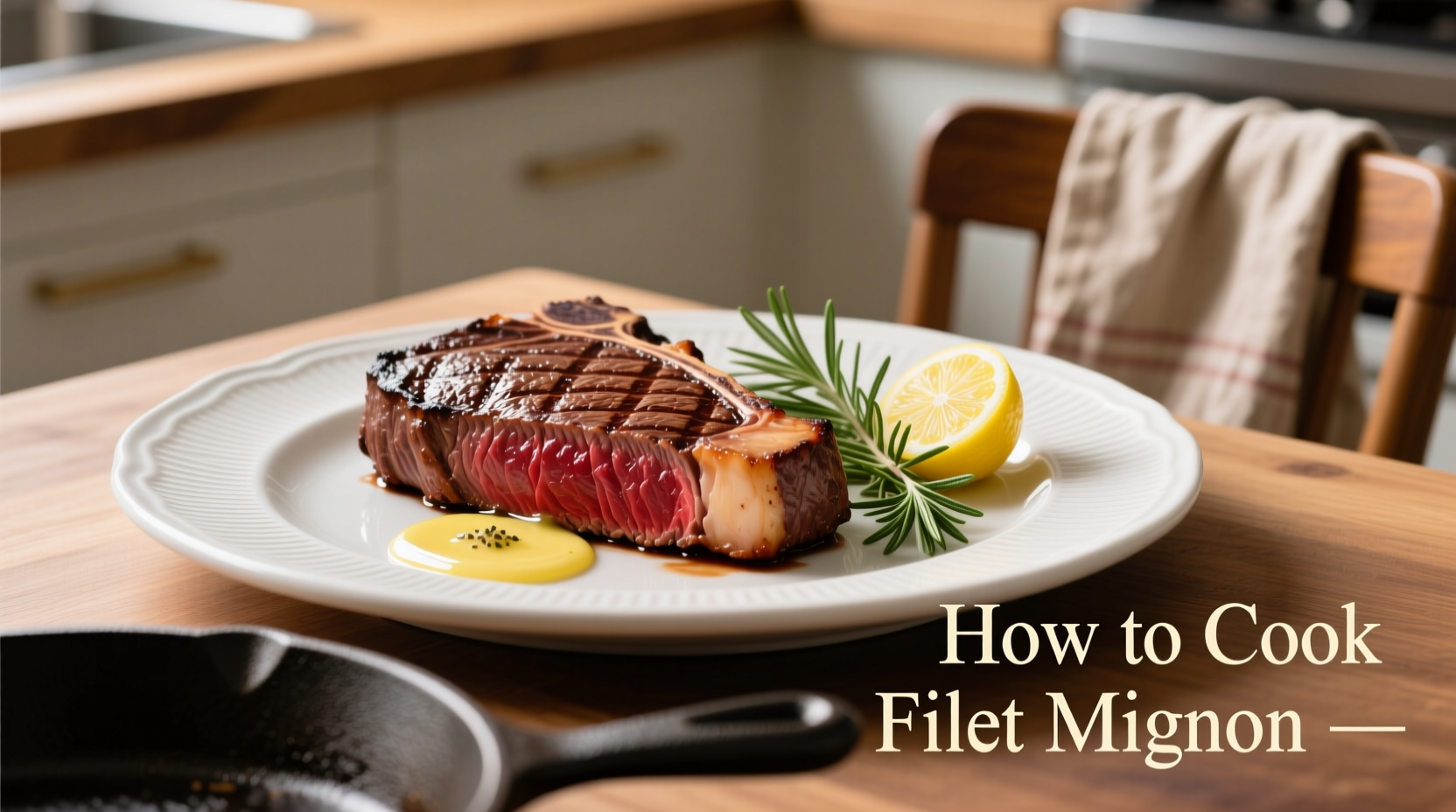Mastering the Perfect Filet Mignon: A Step-by-Step Guide
Cooking filet mignon properly transforms this premium cut into a melt-in-your-mouth experience. As one of the most tender and expensive steaks, it deserves precise technique to maximize its delicate flavor without waste. This guide delivers professional results using simple kitchen equipment, whether you're celebrating a special occasion or treating yourself to a gourmet meal.
Why Filet Mignon Requires Special Attention
Filet mignon comes from the tenderloin, which has minimal fat marbling compared to ribeyes or New York strips. This means it cooks faster but can easily become dry if overcooked. The USDA Food Safety and Inspection Service recommends cooking beef steaks to a minimum internal temperature of 145°F (with 3-minute rest time) for food safety, though many prefer lower temperatures for optimal tenderness. Understanding these parameters prevents costly mistakes with this premium cut.
Essential Equipment Checklist
Before starting your filet mignon cooking process, gather these tools:
- Cast-iron or heavy-bottomed oven-safe skillet (critical for proper sear)
- Instant-read thermometer (non-negotiable for precision)
- Tongs (avoid piercing the meat)
- Wire rack for resting
- Aluminum foil
Selecting Quality Filet Mignon
Start with properly graded meat for the best filet mignon cooking results. The USDA Agricultural Marketing Service verifies that Prime-grade beef has the highest marbling, making it ideal for this lean cut. Look for steaks with consistent thickness (1.5-2 inches) to ensure even cooking. Thinner cuts (under 1 inch) require adjusted timing to prevent overcooking during the searing process.
Preparation: The Foundation of Perfect Results
Remove filet mignon from refrigeration 45-60 minutes before cooking. This crucial step allows the meat to reach room temperature, preventing uneven cooking. Pat thoroughly dry with paper towels—moisture is the enemy of proper searing. Season generously with coarse kosher salt and freshly ground black pepper on all sides. For enhanced flavor development, some chefs recommend adding the salt 40 minutes before cooking to allow proper absorption.
Stovetop-to-Oven Method: Professional Results at Home
This two-stage cooking technique delivers the perfect crust while maintaining ideal internal doneness:
- Preheat oven to 400°F
- Heat cast-iron skillet over medium-high until smoking slightly (about 5 minutes)
- Add high-smoke point oil (avocado or grapeseed)
- Sear filet mignon 2-3 minutes per side until deep golden crust forms
- Flip steak, add butter, garlic, and herbs to skillet
- Tilt pan and spoon melted butter over steak continuously for 30 seconds
- Immediately transfer skillet to preheated oven
- Cook until reaching desired internal temperature (see chart below)
| Doneness Level | Internal Temperature | Visual Cues | Resting Time |
|---|---|---|---|
| Rare | 120-125°F | Bright red center, very soft | 8 minutes |
| Medium-rare | 130-135°F | Warm red center, tender | 10 minutes |
| Medium | 140-145°F | Pink center, slightly firm | 12 minutes |
| Medium-well | 150-155°F | Small pink area, firm | 15 minutes |
Source: Culinary Institute of America cooking standards and USDA Food Safety Guidelines

The Critical Resting Phase
Never skip resting your filet mignon after cooking. During this 8-15 minute period (depending on thickness), juices redistribute throughout the meat. Transfer steak to a wire rack, tent loosely with foil, and wait patiently. Cutting too soon releases precious juices onto your plate instead of staying in the meat. This simple step makes the difference between a dry steak and one that's succulent throughout.
Avoiding Common Filet Mignon Mistakes
Based on professional kitchen observations, these errors ruin otherwise perfect steaks:
- Insufficient preheating: Skillet must be properly hot before adding steak
- Overcrowding the pan: Cook one steak at a time for proper sear development
- Using wet meat: Pat thoroughly dry for optimal crust formation
- Skipping the thermometer: Guessing doneness leads to inconsistent results
- Cutting too soon: Resting time is non-negotiable for juicy results
Serving Suggestions That Complement Without Overpowering
Filet mignon's delicate flavor pairs beautifully with simple accompaniments. Consider these classic combinations:
- Red wine reduction sauce (made with shallots, demi-glace, and Cabernet)
- Roasted garlic mashed potatoes
- Sauteed asparagus with lemon zest
- Truffle butter (adds luxury without masking the beef flavor)
Troubleshooting Guide
If your filet mignon is overcooked: Slice thinly against the grain and serve with extra sauce. Next time, reduce oven time by 1-2 minutes or lower oven temperature to 375°F.
If the crust isn't developing: Ensure steak is completely dry, skillet is properly preheated, and avoid moving the steak during searing. A light sprinkle of sugar can enhance browning.
If cooking time seems off: Thickness variations significantly impact cooking time. For every 0.5 inch difference in thickness, adjust cooking time by 1-2 minutes.











 浙公网安备
33010002000092号
浙公网安备
33010002000092号 浙B2-20120091-4
浙B2-20120091-4